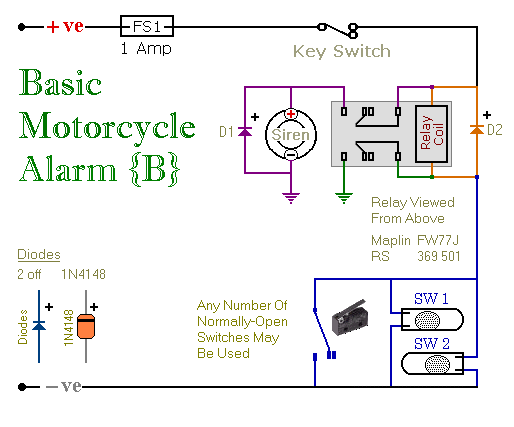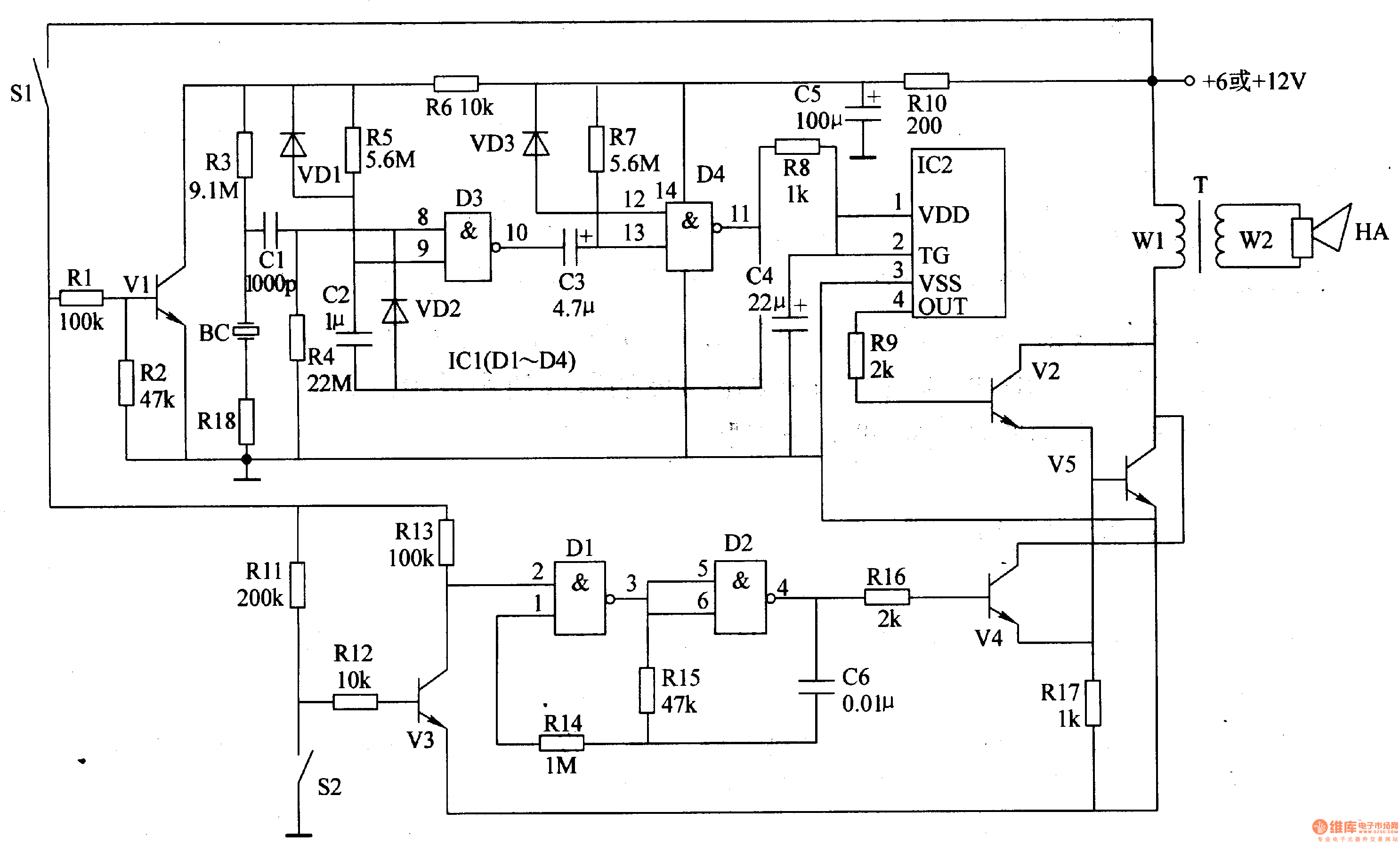
Printer Error Alarm

When a printer is shut down, an alarm is triggered. The input can be either a high-to-low or low-to-high transition. This corresponds to the logic level indicating whether the printer is on or off. The oscillator generates an interrupted (on-off) tone.
The circuit operates by monitoring the power state of the printer through a logic level signal that indicates whether the printer is powered on or off. The input signal is connected to a comparator or a microcontroller input pin that detects transitions in the logic level. When the printer is turned off, the input signal transitions from high to low (or vice versa), which is detected by the circuit.
Upon detecting this transition, the circuit activates an oscillator, which is configured to produce a square wave output. This output is responsible for generating an audible tone that serves as an alarm. The frequency and duty cycle of the oscillator can be adjusted to create different sound patterns, making the alarm more noticeable. The oscillator's output is typically fed to a small speaker or piezo buzzer, which converts the electrical signal into sound.
To ensure reliable operation, the circuit may include debounce circuitry to prevent false triggering due to noise or unintended fluctuations in the input signal. Additionally, a power supply circuit may be implemented to provide the necessary voltage and current to the oscillator and alarm components, ensuring they function correctly even during power fluctuations.
Overall, this circuit design effectively alerts users when a printer is powered down, providing a simple yet efficient solution for monitoring printer status. When a printer is shut down, this alarm sounds an alarm. The input can be either a high-to-low or low-to-high transitio n. This can be a logic level that corresponds with the printer being on or off. The oscillator produces an interrupted (on-off) tone.
The circuit operates by monitoring the power state of the printer through a logic level signal that indicates whether the printer is powered on or off. The input signal is connected to a comparator or a microcontroller input pin that detects transitions in the logic level. When the printer is turned off, the input signal transitions from high to low (or vice versa), which is detected by the circuit.
Upon detecting this transition, the circuit activates an oscillator, which is configured to produce a square wave output. This output is responsible for generating an audible tone that serves as an alarm. The frequency and duty cycle of the oscillator can be adjusted to create different sound patterns, making the alarm more noticeable. The oscillator's output is typically fed to a small speaker or piezo buzzer, which converts the electrical signal into sound.
To ensure reliable operation, the circuit may include debounce circuitry to prevent false triggering due to noise or unintended fluctuations in the input signal. Additionally, a power supply circuit may be implemented to provide the necessary voltage and current to the oscillator and alarm components, ensuring they function correctly even during power fluctuations.
Overall, this circuit design effectively alerts users when a printer is powered down, providing a simple yet efficient solution for monitoring printer status. When a printer is shut down, this alarm sounds an alarm. The input can be either a high-to-low or low-to-high transitio n. This can be a logic level that corresponds with the printer being on or off. The oscillator produces an interrupted (on-off) tone.





